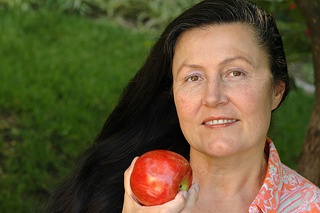May 27th, 2024

A study conducted in Washington State in 2004 and another conducted in Madrid, Spain in 2012 both reported findings that support a direct relationship between parents’ dental fear and their child’s fear of the dentist.
The Washington study examined dental fear among 421 children ages 0.8 to 12.8 years old. They were patients at 21 different private pediatric dental practices in western Washington state. The Spanish study observed 183 children between the ages of seven and 12 as well as their parents.
The Washington study used responses from both parents and the Dental Sub-scale of the Child Fear Survey Schedule. The survey consisted of 15 questions, which invited answers based on the child’s level of fear. The scale was one to five: one meant the child wasn’t afraid at all, and five indicated he or she was terrified. The maximum possible points (based on the greatest fear) was 75.
Spanish researchers found a direct connection between parental dental fear levels and those among their kids. The most important new discovery from the Madrid study was that the greater the fear a father had of going to the dentist, the higher the level of fear among the other family members.
Parents, but especially fathers, who feared dental procedures appeared to pass those fears along to every member of the family. Parents can still have some control over fear levels in their children. It is best not to express your own concerns in front of kids; instead, explain why going to the dentist is important.
Dr. Pohl and our team work hard to make your child’s visit at our Crescent Springs office as comfortable as possible. We understand some patients may be more fearful than others, and will do our best to help ease your child’s anxiety.
May 8th, 2024

Health gurus rave about replacing unhealthy food choices with healthy ones in your diet. If you want to maintain your beautiful smile as well as your waistline, choose foods that are good for your teeth and good for losing weight. This article will discuss some of the worst healthy foods for your teeth and gums, and what you can do to continue to enjoy them.
When watching your weight, snacks heavy in sugar and starch are the first target for elimination. You want to trade those empty calories for something with more nutritional value. A healthier snack is fruit and vegetables. When you are substituting empty calories with whole foods such as fruits and vegetables, consider a few implications for your dental health.
The most acidic fruits are grapes, grapefruit, and strawberries. Want to know the number-one worst healthy food for your tooth enamel? Apples! An apple a day may keep the doctor away but you may soon be calling your dentist.
Another healthy food often incorporated into dieting is salads. But consider what you put in those salads. Salad dressings are filled with vinegar and sweeteners. These make a salad very acidic and can change the pH of your mouth from alkaline, which is good for your teeth and gums, to acidic, which puts your smile at risk for erosion and decay.
Last but not least is diet soda. You might be cutting down on the calories but you are still putting your teeth at risk for decay. Though calories are reduced, the acid is not.
You do not need to eliminate any of these foods from your diet. Simply alter what you do after eating these foods to decrease the amount of acid your teeth are exposed to.
During your next visit to Buttermilk Dentistry in our Crescent Springs office, we can discuss your diet. We may recommend using certain products to fortify your teeth or change the way you routinely care for your teeth.
Please enjoy the wonderful whole foods that are great for a healthy waistline. A healthy waistline and a healthy smile have a positive influence on your general health. A healthier you is a happier you. The happier you are, the more you smile. Keep your smile brilliant and beautiful with the care your teeth deserve at the practice of Dr. Pohl.
April 24th, 2024

Your teeth were once naturally white and bright. Wouldn't it be great to keep them that way all of your life? Unfortunately, everyday living can dim our smiles. Food, coffee, some juices, and soft drinks can stain your teeth. Poor brushing and flossing can also leave tooth stains. Injuries to teeth or gums can cause some yellowing as well, and in some cases, medicines can discolor teeth.
So, you may need some extra help to maintain or restore your teeth's natural beauty. Here are some of the best ways to whiten your teeth:
1. Reduce additional staining by drinking with a straw or cutting back on coffee and soft drinks.
2. Brush and floss every day.
3. Try a whitening toothpaste or mouthwash.
4. Visit our office for teeth cleaning and an exam every six months.
We can also help you whiten your teeth with in-office professional teeth whitening at our Crescent Springs office. These whitening products are much more effective than whiteners you can buy at the store and are completely safe. Since they're stronger, application by a member of our team is essential to achieve the best results.
Some teeth can resist bleaching. If that's the case, we can try several techniques:
- Deep bleaching that applies whitening agents over several visits.
- Veneers and bonds that cover existing stains with a whiter, brighter surface.
- Laser whitening that uses light to clean stubborn stains off teeth.
Take Care!
You may come across “bleaching stations” in shopping malls or at fairs. Avoid using these as the so-called whitening techniques can irritate your teeth and gums, leaving them highly sensitive to pain. Note too, that the operators of these whitening stands will make customers apply the bleach themselves, to avoid charges of practicing without a license. That should serve as a red flag and a caution to seek trained professionals, like Dr. Pohl, instead.
April 17th, 2024

It's a habit many people have and not only can it be annoying to the people around you, it can be detrimental to your dental health. Chewing ice is so common that it even has its own name, pagophagia. We're not talking about a slushy or shaved ice (although those artificially sugary treats should be avoided too!) but more like the hunks of ice rattling around in the bottom of your glass.
Ice chewing can be a sign of emotional problems like stress or obsessive-compulsive disorder, but it can also be a marker for iron deficiency anemia and other physical problems. Then again, some people just like to have something to chew on. For whatever reason you find yourself chewing on it, it's a habit you need to break.
Chewing on ice can cause:
- Chipped and cracked teeth
- Damaged enamel
- Sore jaw muscles
- Damage to dental work such as crowns, fillings, or other appliances
If chewing on ice is becoming a problem in your life, don’t hesitate to speak with Dr. Pohl about it. But if you find yourself still wanting to chew on something, here are a few alternatives to ice:
- Baby carrots
- Celery sticks
- Sugar-free (xylitol) gum
We know you need to chill sometimes, but chomping down your entire glass of ice is not the way to do it. If you have any other questions on the topic, feel free to talk with a member of our Crescent Springs team. It may be beneficial in solving the issue and helping to remediate any damage to your teeth.







 Website Powered by Sesame 24-7™
Website Powered by Sesame 24-7™